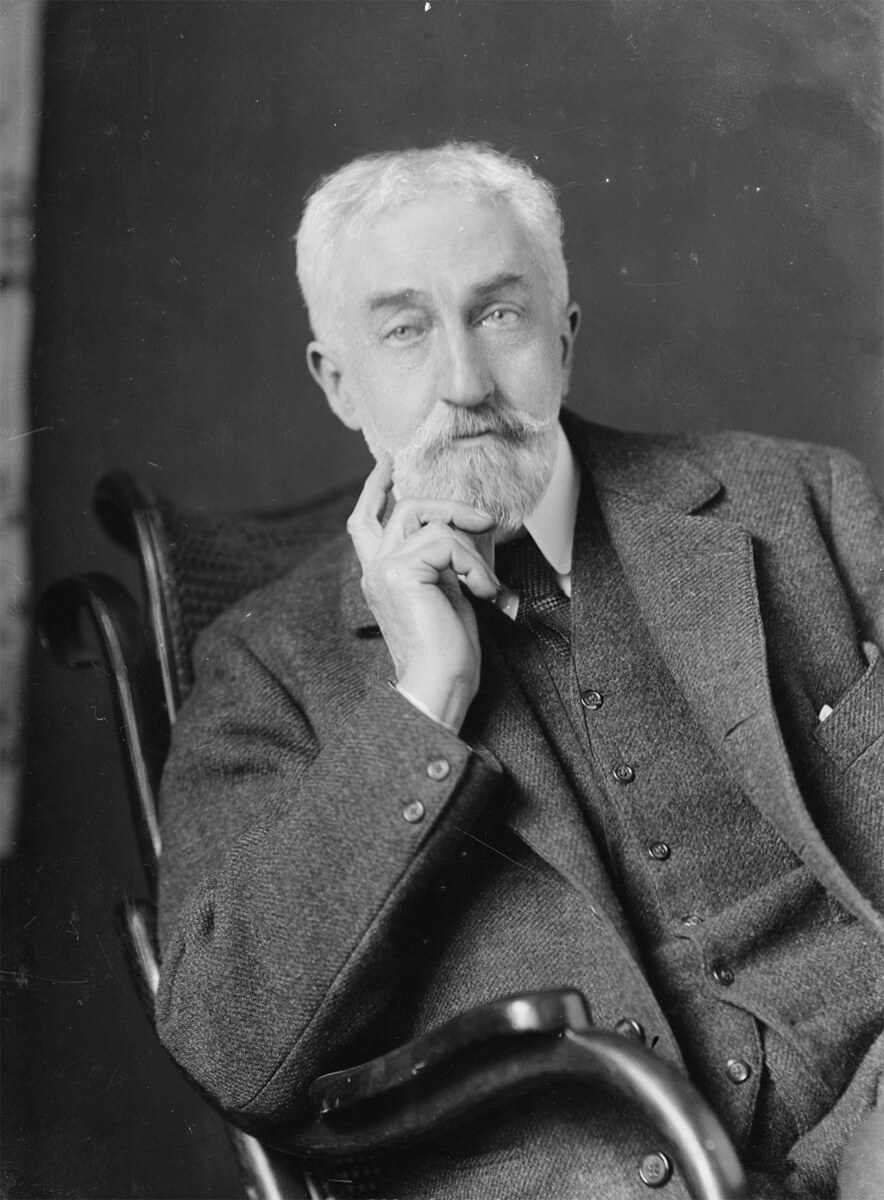Robert Demachy (1859–1936) was a prominent French Pictorial photographer of the late 19th and early 20th century. He is best known for his intensely manipulated prints that display a distinct painterly quality. Léon-Robert Demachy was born in the home of his grandmother in Saint-Germain-en-Laye, on the outskirts of Paris, on 7 July 1859. His parents, Charles Adolphe Demachy (1818–1888) and Zoé Girod de l’Ain (1827–1916), had two other sons, Charles Amédée (1852–1911) and Adrien Édouard (1854–1927), and a daughter, Germaine (1856-1940?). The elder Charles had started the highly successful financial enterprise of Banque Demachy, and by the time Demachy was born the family was very wealthy. He had no need to earn a living, and there is no record of his having ever been employed anywhere. He dropped the first part of his name in his childhood and was always known as "Robert".
After his birth his family returned to their mansion at 13 Rue François Premier in Paris, where Demachy continued to live for the next fifty years. His early years were quite idyllic, and each year his family would spend several months at their summer villa near Villers-sur-Mer in Normandy. The rest of the year he was educated in Jesuit schools in Paris, and he became fluent in English by the time he was a teenager. His education also included extensive musical lessons, and he became an accomplished violin player.
About 1870, Demachy, his mother and his siblings left Paris for Brussels due to the increasing dangers of the Franco-Prussian War. His father stayed in Paris as part of the Commune and the Banque Demachy played an important role in financing the resistance efforts.
When he turned eighteen Demachy briefly served a year as an army volunteer, but he soon returned to his life of comfort. In the mid-1870s he began frequenting the artists’ cafés and, perhaps in rebellion to his gentrified life, he became involved in the growing bohemian culture that was beginning to take hold in Paris. He began making sketches of café patrons and people on the street, a practice he continued throughout his life.
Source: Wikipedia
Robert Demachy was considered by many to be the most influential Pictorialist photographer across the whole of Europe. He was a man of independent means allowing him to focus completely on photography and international travel for it. He was a strong advocate of gum bichromate to enhance Pictorialist photography, for which he coined the term ‘ Photo-Aquatint’ associating it with intaglio printmaking.
It is obvious when studying his work closely that his enjoyment of this process was from the artistic freedom it gave him. His gum prints were very successful, with their greatly softened detail quite deliberately reminiscent of impressionist art.
Demachy became a strong and vocal defender of manipulated printing techniques. He is most famous for the prominent brushstrokes and rough-textured papers. Although these were greatly manipulated, he was able to bring an air of naturalism and poise to his work.
He wrote
“Do not say that nature being beautiful, and photography being able to reproduce its beauty, therefore photography is Art. This is unsound. Nature is often beautiful, of course, but never artistic ’per se’, for there can be no art without intervention of the artist in the making of the picture. Nature is but a theme for the artist to play upon. Straight photography registers the theme, that is all - and, between ourselves, it registers it differently” Quoted in
Robert Demachy: Photographs and Essays. Bill Jay, 1974.
Robert Demachy was a leader in French Pictorialist photography at the turn of the last century. He was elected to the Société française de photographie in 1882 and co-founded the Photo-Club de Paris with Maurice Bucquet in 1888.
He had his first exhibition of gum prints in 1895 at the
Photo-Club de Paris, which helped to promote his increasingly international status: the same year he was elected to
The Linked Ring in London and made an honorary member of the
Royal Photographic Society.
Source: Edward Draper
